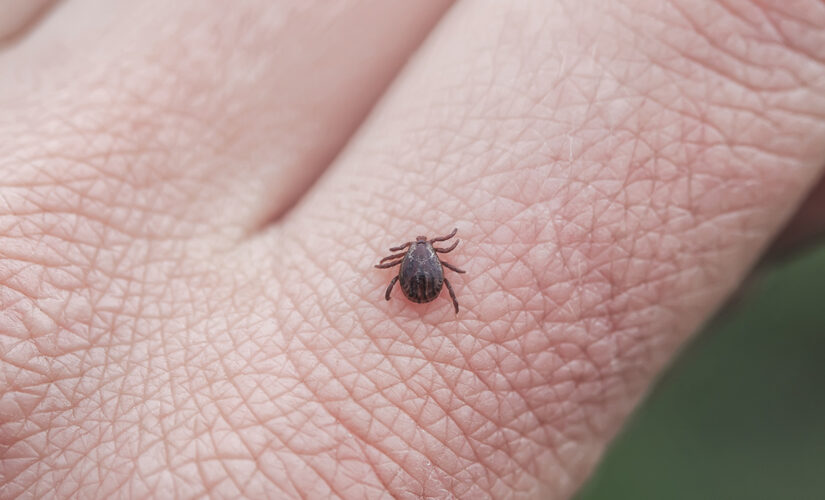NEWYou can now listen to Fox News articles!
Tick bites are on the rise in the U.S. with the Centers for Disease Control and Prevention (CDC) reporting that the majority of cases typically occur in the warmer months. Among the most recent cases: a man in Maine who died from a rare virus spread by the bite of infected ticks, the state’s CDC reported in April 2022.
Tick bites could lead to many dangerous illnesses in humans such as Lyme disease, Rocky Mountain spotted fever, ehrlichiosis and others. And while tick bites are typically a concern for hikers or those who spend time in wooded areas, certain species can be found in grassy areas or gardens. Pets that spend time outdoors are also at risk of picking them up.
Most bites are usually reported in children ages 0-9.
There are several prevention measures the CDC suggests that may help keep ticks away, such as applying pesticides in the yard, removing leaf litter, clearing tall grasses and brush, placing a 3-foot barrier of wood chips or gravel between lawns and wooded areas, mowing the lawn frequently, discouraging unwelcome animals from entering the yard, and removing old furniture, mattresses or trash from the yard.
TICK BITE LANDS BOY IN ICU WITH ROCKY MOUNTAIN SPOTTED FEVER DIAGNOSIS, MOM SAYS
Knowing where to expect ticks can also help, as can treating clothing and gear with products containing 0.5% permethrin. EPA-registered insect repellents can also help keep you protected, as can avoiding wooded or brushy areas with high grass and leaf litter. Walking in the center of trails while in wooded or high grassy areas can also help lower your risk.
Once inside, check clothing for ticks any found quickly, the CDC advises. Tumble dry clothing on high heat for 10 minutes to kill off any you may have missed. Showering within two hours of coming indoors may also help wash off any unattached ticks and is a good chance to do a tick check. It is especially important to check under the arms, in and around the ears, inside the belly button, back of the knees, in and around the hair between the legs and around the waist.
If you do find a tick, don’t panic. Use fine-tipped tweezers to grasp the tick as close to the skin’s surface as possible, pull upward with stead, even pressure and don’t twist or jerk the tick. If you are unable to remove the mouth of the tick easily leave it alone and let the skin heal. Wash the bite area thoroughly and your hands with rubbing alcohol, soap and water.
CLICK HERE TO GET THE FOX NEWS APP
Once removed, do not squish the tick with your fingers, the CDC warned. Dispose of it by putting it in alcohol, placing it in a sealed bag, wrapping it tightly in tape, or flushing it down the toilet. If a rash or fever develops within several weeks of removing the tick, see a doctor and mention the bite.
Dogs are also susceptible to tick bites and they may be hard to detect. Checking for ticks daily, especially after time outdoors can help, the CDC advises.




